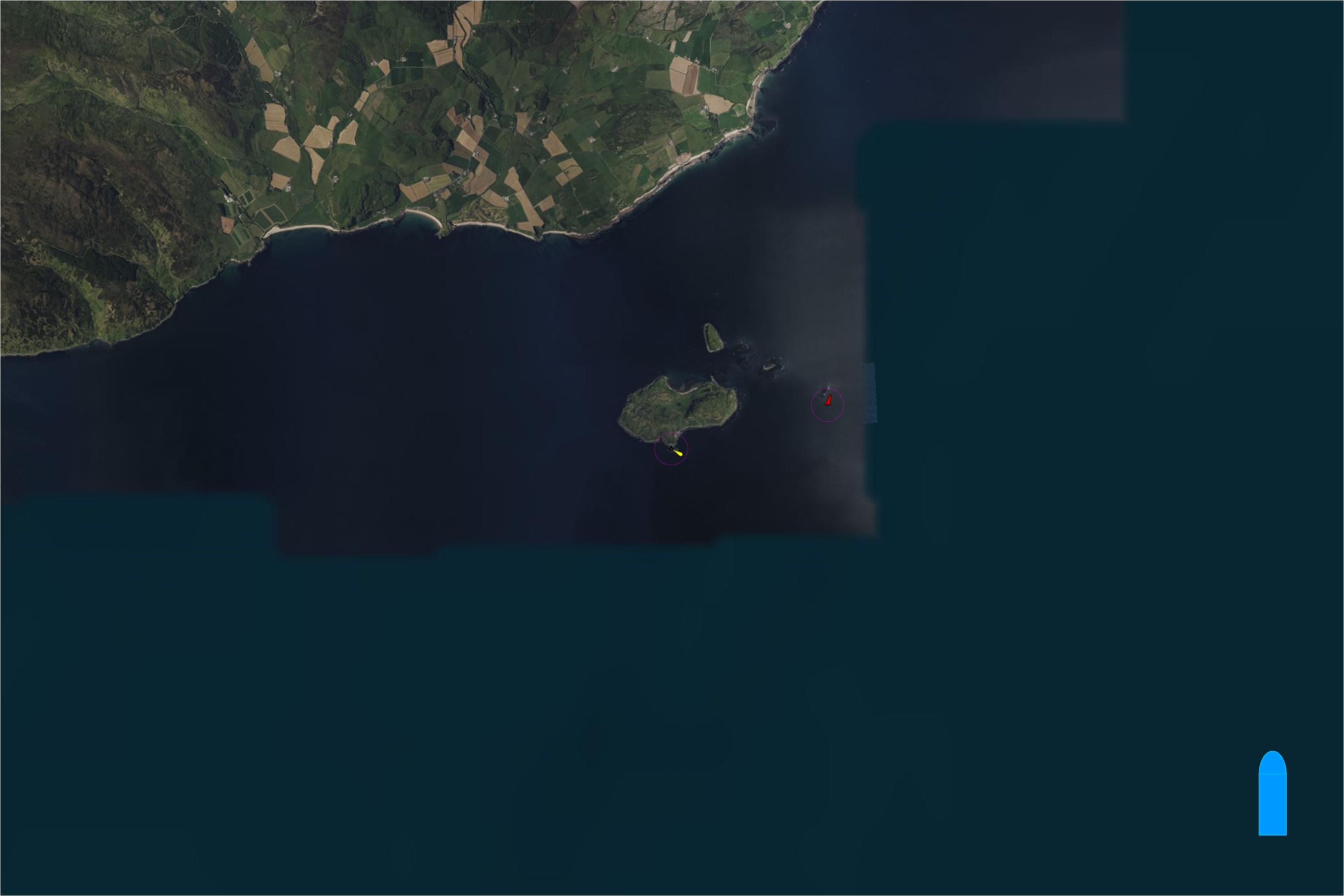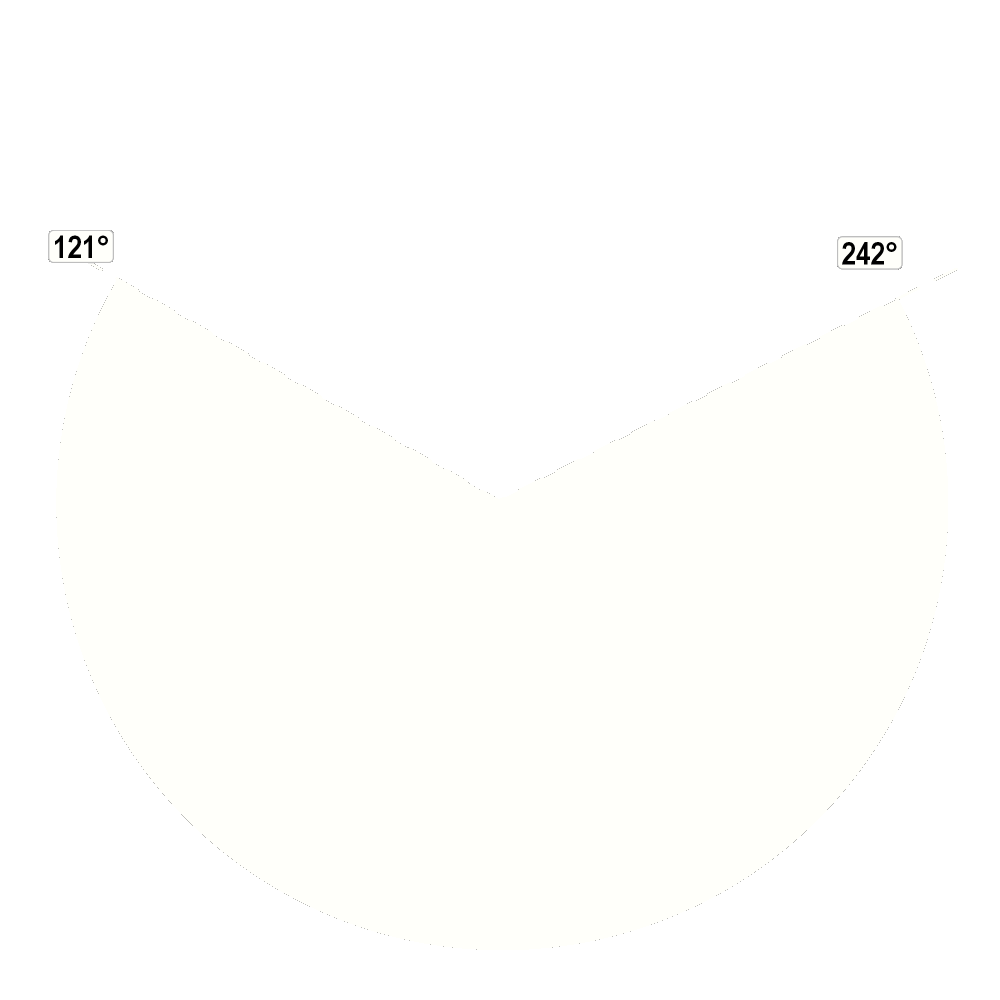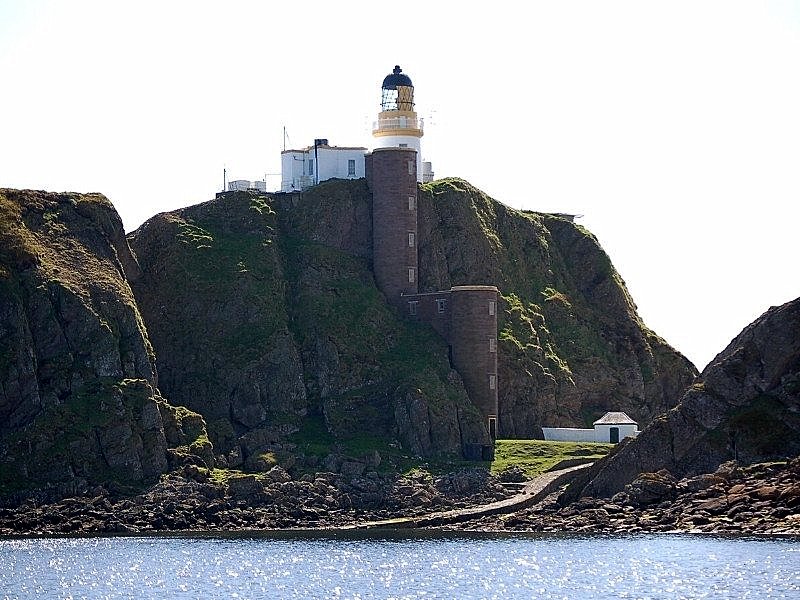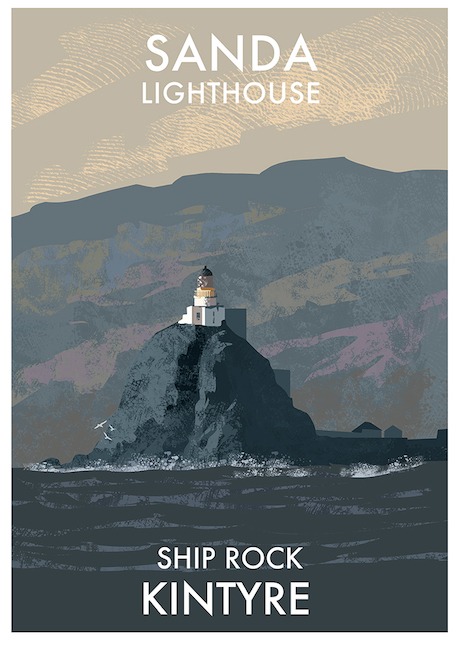
Place of the lighthouse
Sanda (Scottish Gaelic: Sandaigh) is a small privately owned island in Argyll and Bute, Scotland, off the southern tip of the Kintyre peninsula, near Southend and Dunaverty Castle. On clear days Sanda can be seen from the southern tip of the Kintyre peninsula, from the Isle of Arran and from northeast County Antrim. It is known locally on Arran as "Spoon Island" because of its resemblance to an upturned spoon when viewed from the South coast of the island.Sanda lighthouse is situated off the south end of Kintyre. Since the CHRISTIANA, of Glasgow, outward bound in bad weather, was lost with all hands on the nearby Pattersons Rock as far back as 1825, there had been a demand for a light on this island which forms the turning into the Clyde after passing through the north Channel between Scotland and Ireland.
Trinity House proposed we move the Mull of Kintyre light to Sanda, the Commissioners declined, although they were willing to mark Pattersons Rock with a beacon. As wrecks continued, however, they later decided to build on the summit of the vessel Rock which is a small detached rock off Sanda. The engineer designed a stone tower 3 steps set against the face of the rock, still the only one of its kind in Scotland. It was first lighted in 1850.

John Sutherland with family friend, Jean Budge, pictured in the 1920s when Sutherland was Keeper of Sanda Lighthouse.
In 1900 the RNL silver medal and vellum citation was presented to the attending boatman for Sanda - Daniel Dempsey and his 2 sons - for saving the crew of a schooner wrecked near the lighthouse, using a small boat in heavy seas and at great risk to themselves.

One of the Board's vessels the SIGNAL, had the misfortune to run ground on the Mull of Kintyre peninsula in dense fog in 1895 while on the way from McArthur's Head to Sanda. The boats were at once launched and all on board, including one of the Commissioners, Sheriff William Ivory, were saved with most of their effects. Attempts to salvage the vessel proved fruitless, and she sank the next day. There have been several vesselwrecks at Sanda. In March 1946, the American liberty vessel BYRON DARNTON ran aground. Fifty four people were on board and all were saved.
On October 19, 1970, the Dutch cattle vessel HEREFORD EXPRESS went aground. Her cargo of livestock was either drowned or destroyed by the SSPCA officers who flew out to Sanda by Helicopter.
PRB 46 1989 Nickname "the Ship"The lighthouse was relieved by boat but in 1976/7 the helicopter was introduced to the service and this made a difference to the keepers. The weather was no longer a major factor to the reliefs being made.
It should be noted that at some sites the Northern Lighthouse Board have sold some redundant buildings within the lighthouse complex and are not responsible for the maintenance of these building.
Description Sanda Lighthouse was built in 1850 by the Northern Lighthouse Board to plans by the engineer Alan Stevenson. The lighthouse is a complex that comprises a light tower on top of Ship Rock and a two-stage stair tower linking the lighthouse with the pier and other buildings below Ship Rock. The light tower occupies a prominently but isolated coastal clifftop location on the southern side of Sanda Island off the southern end of the Mull of Kintyre. Its purpose was to warn passing seafarers of both Sanda Island itself and several small reefs and rocks adjacent to it. The lighthouse and stair towers are constructed of dressed sandstone, and the light is also harled and whitewashed, with flat roofs. The light tower is a round building around 15m in height. A protruding walkway with metal railings encircles the tower head just below a dome-roofed lantern. The lantern is round with triangular glazing and diagonal metal astragals. Attached to the southeast side of the light tower is a single storey, three bay flat-roofed building with 12 pane timber-framed sash and case windows. The interior of the building has been modernised to support the continuing function of the lighthouse. To the west of these buildings, a later helipad has been installed on Ship Rock and solar panels have been installed on the south. A plastic oil tank has also been added immediately east of the lighthouse and a water tank immediately west. These additions are not of interest in listing terms and are excluded from the listing. The two-stage stair tower is located to the north of the light tower and attached building, to which the uppermost level of the stair towers is connected by a small passageway. The towers are a pair of flat-roofed, round sandstone buildings constructed against the cliff face of Ship Rock itself. A narrow, straight passageway of the same construction links the two towers at mid-level. The lower tower has a single door and three rectangular windows, and the upper tower has four windows in their respective north sides. The mid-level passageway has two rectangular windows on its east side and one on its west, while the upper passageway has only one window on its west side. Historic photographs indicate that the two stair towers previously had decorative crenellations around the flat roofs, but these have since been removed. Internally, the stair towers each accommodate a spiral staircase, giving a total of 210 stairs from the door at the bottom of the stair tower to the top of light tower itself. Legal exclusions In accordance with Section 1 (4A) of the Planning (Listed Buildings and Conservation Areas) (Scotland) Act 1997 the following are excluded from the listing: the helipad, solar panels, the oil tank and the water tank. The helipad and solar panels were added during the mid-20th century and are not of interest in listing terms. The oil tank and the water tank are modern plastic additions and are not of interest in listing terms. Historical development The extent of the hazard posed to shipping entering and leaving the Firth of Clyde, by the island of Sanda and its adjacent reefs and rocks is evidenced by records of over 150 vessels lost in the area. Wrecks included the Christiana (Canmore ID 218543), the Henrietta (Canmore ID 298604) and the Hannah (Canmore ID 218145). The location of a lighthouse at Sanda had been proposed from at least 1825, following the loss with all hands of the Christiana on the nearby Patterson's Rock while outward bound from the Clyde (Munro, 1979:124). In response to this loss, the Irish board installed a light at the Maidens off the Larne coast, and Trinity House requested that the Northern Lighthouse Board move Thomas Smith's 1788 light on the Mull of Kintyre, to Sanda instead. The Northern Lighthouse Board resisted this move, but with continuing wrecks, it was eventually decided a light should be built upon Sanda. Construction of the lighthouse began in 1849 and the light was first lit on 7 January 1850. A temporary wooden barracks was provided for accommodation until the lighthouse keepers' cottages were completed (Glasgow Herald 8 July 1850). A Notice To Mariners announced the operation of the light as a fixed red light, and also the introduction of a toll on passing shipping in respect of Sanda light (Greenock Advertiser 18 December 1849). Although the number of shipwrecks reduced after the lighthouse became operational, they did not stop entirely, with further wrecks including the Roberts (Canmore ID 284464), the Byron Darnton (Canmore ID 114911) and the Hereford Express (Canmore ID 115253). In 1900, the attending boatman at Sanda, Daniel Dempsey, and his two sons were awarded the Royal National Lifeboat (RNL) silver medal and vellum citation for rescuing the crew of a schooner wrecked near the lighthouse in bad weather (Munro 1979: 191). Sanda Lighthouse remains operational as an automated light (2020), having been converted in 1991. Statement of Special Interest Sanda Lighthouse meets the criteria of special architectural or historic interest for the following reasons: Sanda Lighthouse is a relatively unaltered example of a mid-19th century design by Alan Stevenson and retains much of its original character. Sanda Lighthouse is unique within Scotland's lighthouses in its use of a multi-stage stone stair tower building to provide access between the keeper's accommodation and the lighthouse on top of Ship Rock. It is an outstanding engineering success. The setting of Sanda Lighthouse is largely unchanged since the lighthouse was built. Sanda Lighthouse has a close historical association of national importance with Stevenson family, renowned nationally and internationally for their contribution to lighthouse design and engineering. In accordance with Section 1 (4A) of the Planning (Listed Buildings and Conservation Areas) (Scotland) Act 1997 the following are excluded from the listing: the helipad, solar panels, oil tank and water tank. Architectural interest Design The lighthouse at Sanda Island is of design interest as an example of mid-19th century work of the engineer Alan Stevenson. The design of the buildings at Sanda Lighthouse are typical of the Stevenson's 'house style'. The focus on function is reflected in the simple, well-proportioned design, that is typical for a manned Stevenson lighthouse. However, there are also highly unusual details such as the unique sandstone stair tower, necessary to address the specific needs of this location. The construction of the stair towers and the light tower on top of Ship Rock represent an outstanding feat of engineering. The diagonal astragals and triangular windows on the lantern are features that Alan Stevenson introduced and which became common in Scottish lighthouses from 1849 having been first used at Noss Head (Strachan, 2016:33). This made for a stronger support structure while reducing interference with the light beam. While later features such as the helipad are not of interest in listing terms, the overall design interest of the Sanda Lighthouse has not been affected by the later minor alterations to the buildings at this site. It is a relatively unaltered example of a mid-19th century design by Alan Stevenson and retains much of its original character. Setting The location for any lighthouse is critical to its function. Sanda Lighthouse is located on the island of Sanda off the southernmost tip of the Mull of Kintyre. This lighthouse overlooks the north channel between the Mull of Kintyre and the coast of Ireland and the Firth of Clyde to the east, warning shipping away from the island of Sanda and the surrounding small reefs and rocks. The specific location chosen was the top of Ship Rock, a small rock outcrop connected to the south of the main island of Sanda itself. The strength of the light after automation means it is today capable of being seen up to 28km away. The prominent clifftop setting of the lighthouse overlooking the channels in and out of the Firth of Clyde has not significantly changed since its construction. At the base of Ship Rock there are ancillary buildings associated with the lighthouse including keeper's accommodation. Historic interest Age and rarity Sanda is of interest is one of only thirteen major lights designed by Alan Stevenson during his tenure as engineer to the Northern Lighthouse Board 1843-53. It is a unique example on account of the design and construction tailored to the location of the lighthouse at the southern tip of Sanda Island. It was also one of the last lighthouses within Scotland to be lit with paraffin vapour, only being electrified and automated in 1991. Sanda therefore forms an important chapter in the story of Scotland's lighthouses. There are over 200 operational Northern Lighthouse Board lighthouses within Scotland, with many other examples either decommissioned or operated by other organisations and groups. They range from elegant stone pinnacles on remote reefs far out to sea, to small navigational beacons and modern modular lights. Of these, around 150 lighthouses of various shapes, sizes and types are currently designated as either listed buildings or scheduled monuments, representing a wide range of specific navigational dangers that required marking at night. Social historical interest Social historical interest is the way a building contributes to our understanding of how people lived in the past, and how our social and economic history is shown in a building and/or in its setting. Sanda is of social historical interest as part of Scotland's lighthouse network, a substantial and ongoing effort to reduce the dangers to shipping around the coastline of the country. The significance of Scotland's lighthouse network to the country's history is high. As an island nation with over 18,000 kilometres of coastline and over 900 islands, maritime industries such as fishing, coastal trade and transportation have long been significant social and economic factors. Scotland's coasts are also located on international sea-routes linking northern Europe with the rest of the world. The use of lighthouses was therefore vital to the safety of shipping in Scottish waters. Prior to the construction of Scotland's lighthouses, most navigation markers were landmarks visible only during daylight, and so nautical navigation at night or in poor conditions was a highly dangerous but sometimes unavoidable undertaking. This is reflected in the large numbers of records of ships and sailors lost in wrecking incidents around the coasts of Scotland during the 19th and 19th centuries. The first lighthouse in Scotland was established on the Isle of May (SM887) in 1636. This light aided navigation into the many harbours around the Firth of Forth and took the form of a stone tower mounting a coal fired brazier. Although the Isle of May beacon was far from as bright as later examples, in good weather it good be seen from as far as the entrance to the Tay, and it would remain operational for 180 years. The Isle of May was followed by several other lighthouses and beacons being built from the late 17th century, improving navigation for the Tay, the Solway and the Clyde. A common factor in all the lights established in the first 150 years was that they were conceived, built and operated by private interests and organisations, such as local magistrates, councils and individuals, supported by the king and parliament when necessary. By the early 1780s, however, there was a growing recognition that many shipping and navigational dangers existed far beyond the profitable harbours and estuaries that had driven the development of the early lights. To address this, in 1786 parliament passed "An Act for erecting certain Light-houses in the Northern Parts of Great Britain" and established a board of Commissioners (subsequently to become the Commissioners of the Northern Lighthouses and then the Northern Lighthouse Board), initially to undertake the work of building and maintaining lights at four locations, including Kinnaird Head (LB31888), Eilean Glas (LB13487), Mull of Kintyre (LB19874) and North Ronaldsay (SM6596). These lights were the work of the Board's first engineer, Thomas Smith, and his assistant Robert Stevenson, and used improved lighting technology in the form of whale oil burners and mirrored reflectors to enhance the brightness. Following the 1786 Act, the number of lighthouses around the coasts of Scotland began to rapidly grow, along with the technology and engineering skills employed. By the early 19th century oil lamps were replacing the earlier coal burners, and Robert Stevenson had been able to design and build a lighthouse on the Bell Rock (LB45197). Throughout the 19th and early 20th century, Robert Stevenson and his descendants continued to push the boundaries of technology and engineering to expand the network, including lights on Skerryvore (LB17489), Muckle Flugga (LB17479), Dhu Heartach (LB12320), and the Flannan Isles (LB48143). Sanda Lighthouse illustrates how Alan Stevenson continued this tradition of innovation and engineering excellence at some of the most exposed and isolated locations of the Scottish coastline. Association with people or events of national importance The buildings have a close historical association of national importance. The Sanda Lighthouse complex is one of many Northern Lighthouse Board lighthouses to be designed by one of the Stevenson family, a connection stretching across three generations and spanning over 150 years. Alan Stevenson was born in 1807 to Robert Stevenson and Jean Smith. Alan was the eldest of their children to survive to adulthood and followed in his father's footsteps as an engineer to the Northern Lighthouse Board. He was responsible for thirteen Northern Lighthouse Board major lights, including the tallest lighthouse in Scotland at Skerryvore. His career as an engineer to the Northern Lighthouse Board was cut short after only a decade due to illness, and he was succeeded by his younger brothers David and Thomas Stevenson. The efforts of the Stevenson family in designing and constructing the network of lighthouses around Scotland's coasts, often against seemingly overwhelming odds, has led to their collectively being known as the "Lighthouse Stevensons", and as some of Scotland's greatest engineering minds. Sanda Lighthouse is located off the south end of the Kintyre peninsula, around 13 miles from Campbeltown. The island marks a turning point for vessels entering into and from the Clyde, bound for Ireland. It posed a significant shipping hazard, and over 150 vessels were lost around Sanda and its outlying rocks. There had been significant demand for a light in the area since the loss of the Christiana in 1825. Trinity House proposed moving the Mull of Kintyre Lighthouse to Sanda. The Northern Lighthouse Board considered marking Patterson’s Rock, to the east of the island, with a beacon. Sanda Lighthouse There are cliffs on most sides of the island and caves on the coast’s western side. There are a couple of natural arches, which some say look like an elephant. One of these arches is near the Ship. Construction of Sanda Lighthouse began in 1849. The tower was built on the top of Ship Rock at the southern end of the island. A temporary wooden barrack was used until the lighthouse keepers’ cottages were completed. Access from the keepers’ cottages was by means of a set of two external staircases built into the rock. These led to the third tower, the lighthouse itself. This is the only Scottish lighthouse with this design, possibly in the world. The lighthouse was first exhibited on 7 January 1850. The original light was a fixed red light, shown through a glass chimney. In 1900 a schooner was wrecked near the lighthouse. The Sanda Boatman and his two sons were awarded medals for their bravery in saving the crew using their small boat. In March 1946 American liberty ship the Byron Darnton ran aground. All 54 onboard were saved. In 2003 the Byron Darnton Tavern was opened, named after the Ship. This is no longer open. From 1976 onwards, helicopter reliefs took over from boat reliefs. The original 1850 optic was later removed, is now on display at the Museum of Scottish Lighthouses. Additional vertical rotating condensing prisms were added in 1882 to give its unique character. The 400-acre island has had a number of private owners, one of which was Jack Bruce of the rock group Cream. In August 2008 was sold, and in 2011 the new owners opened up the island for a while. However, this is no longer the case. Sanda Lighthouse A set of stamps were produced on the island in the 1960s. Another set was produced in 1970 for the then owner rock star Jack Bruce. There is also a bird observatory on the island. Boat trips can be taken from Campbeltown harbour around the island.

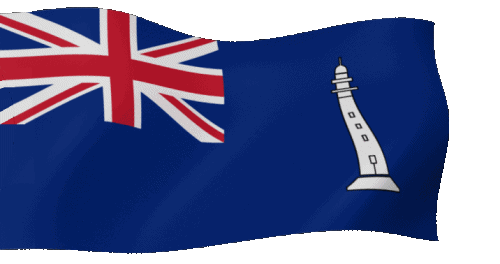
 Update: 01-03-2025
Update: 01-03-2025